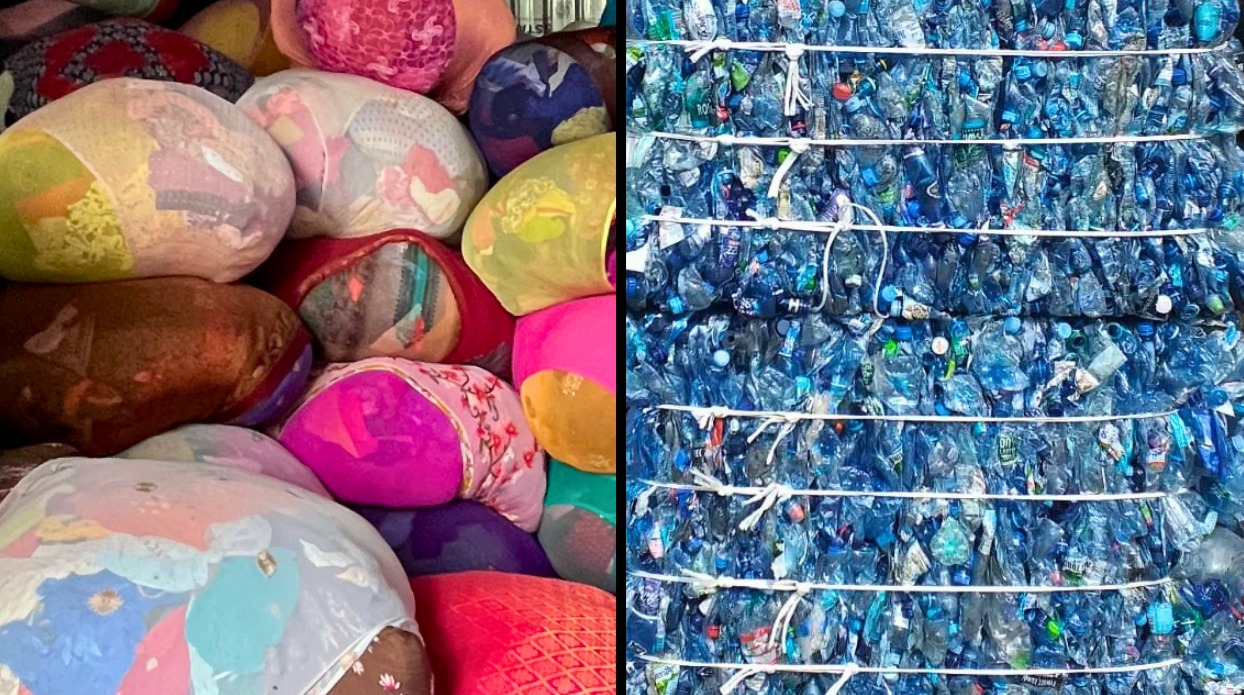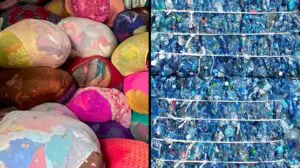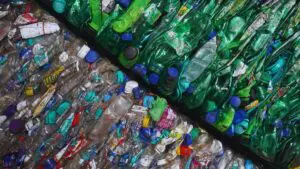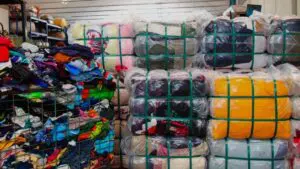In most Indian cities, waste travels a long way — from our homes and offices to overburdened landfills that grow larger by the day. In a country where most waste still ends up in landfills or dumps, the question isn’t how much we collect, but what happens next.
Every plastic wrapper, old T-shirt, and rusted can has the potential to live another life if it passes through the right hands and the right systems.
That’s where India’s Material Recovery Facilities (MRFs) and Textile Recovery Facilities (TRFs) come in. These are the places where waste stops being waste. They’re not recycling plants, but the first layer of sorting, recovery, and redirection that makes recycling possible at all.
At ReCircle, we work closely with both types of facilities. Our network now spans over 300 MRFs across India, empowering 3,500+ Safai Saathis, the backbone of this recovery ecosystem.
Let’s look more closely at how these two recovery systems differ and how each plays a unique role in keeping materials in circulation and out of landfills.
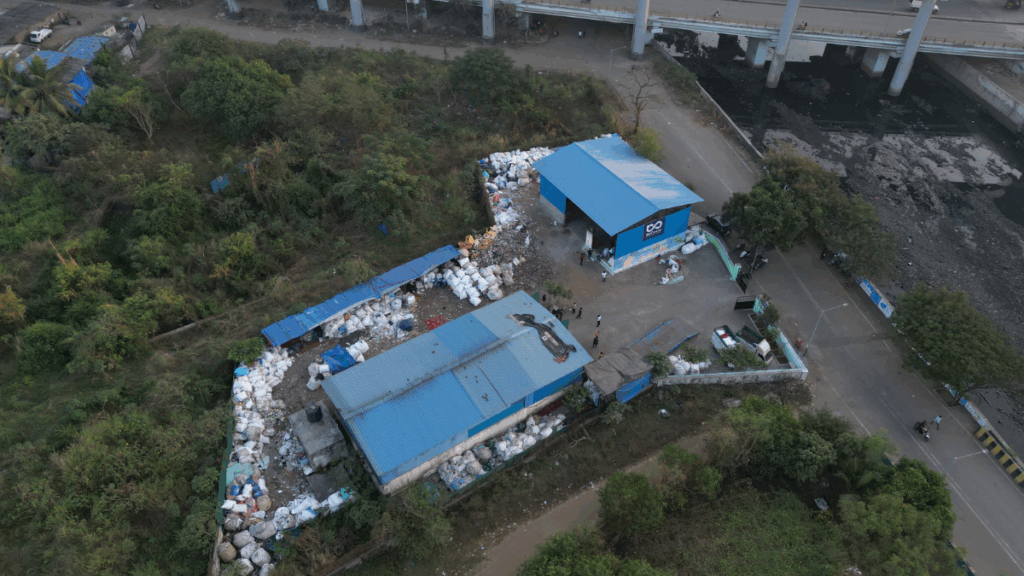
MRF vs TRF: Two Facilities, One Vision
Both the Material Recovery Facility and the Textile Recovery Facility serve the same larger goal: recovering value from what the world discards.
Together, they build the base infrastructure of India’s circular economy.
Yet their inner workings, the communities that power them, and even the materials they touch tell two very different stories.
Below, we explore these differences in a little more depth.
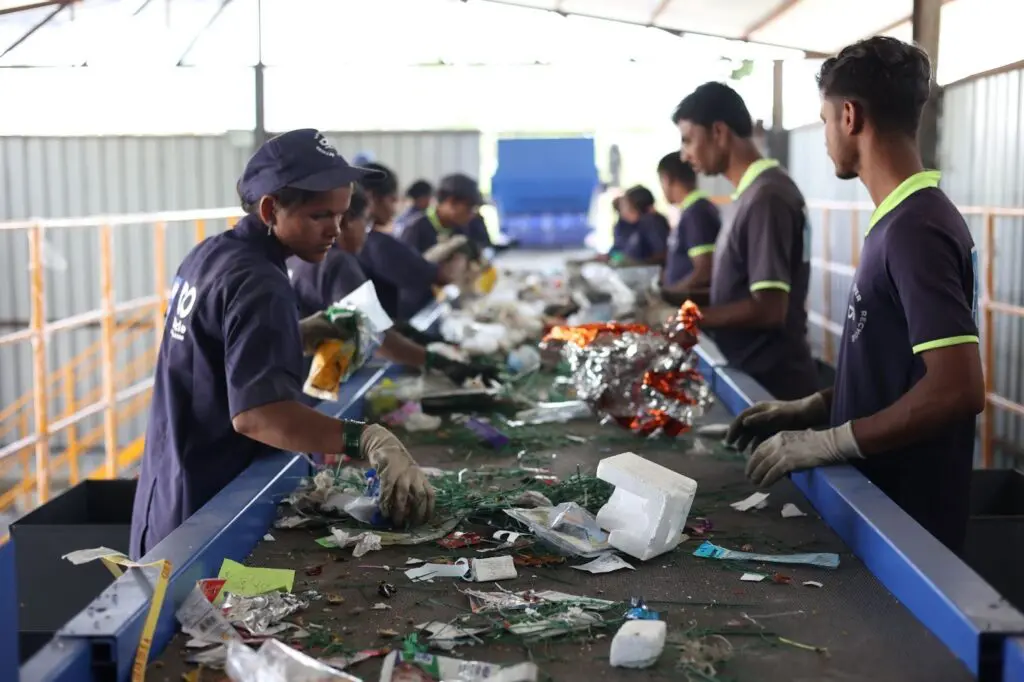
Operational Differences between the MRF & TRF
The Material Recovery Facility (MRF): Where Waste Finds Its Second Life
Step inside a Material Recovery Facility, and you’ll find organised chaos that leads to order. Every day, tonnes of mixed materials arrive from homes, offices, institutions, and collection partners. The process begins long before recycling — it starts with recovery.
Here’s how the journey unfolds:
- Receiving Waste: The MRF receives mixed waste streams, including post-consumer plastics and paper packaging, as well as metals and multilayer materials.
- Sorting and Segregation: Advanced conveyor belts and sorting lines help our Safai Saathis separate materials by type, texture, and recyclability. Plastics, for example, are grouped by polymer type (PET, HDPE, LDPE, etc.), while metals and paper are sorted manually and mechanically.
- Processing and Cleaning: Each material is cleaned to remove impurities. Plastics are shredded, washed, and compacted into bales. Paper and cardboard are pressed and stored for pulping, while metals are sent for smelting or reuse.
- Storage and Dispatch: Once sorted, materials are safely stored in designated zones until they are sent to plastic recycling companies in India and partner processors.
- Community Empowerment: Beyond recovery, the MRF creates stable, dignified employment for waste workers — our Safai Saathis — who are trained, equipped with PPE, and recognised as crucial partners in India’s sustainability journey.
Every step at the MRF is guided by traceability, compliance, and care. This system directly supports India’s Plastic Waste Management Rules and helps brands meet their Extended Producer Responsibility (EPR) commitments.
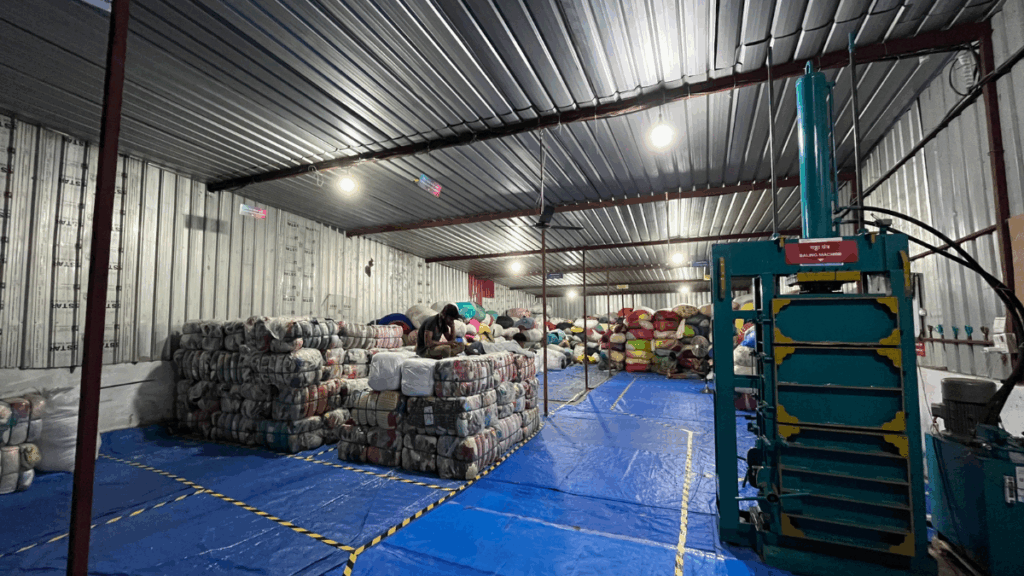
The Textile Recovery Facility (TRF): The Next Frontier of Recycling
While MRFs handle mixed materials, Textile Recovery Facilities focus exclusively on fabric and garment waste —a growing concern in India’s fast-changing fashion landscape.
Here’s how it works:
- Collection and Sorting: The TRF receives post-consumer clothes, production offcuts, and defective stock from brands. Skilled workers sort them by fibre composition (cotton, polyester, blends, etc.), colour, and quality.
- Pre-Processing: Textiles are cleaned, stripped of non-fabric parts like zippers and buttons, and shredded into smaller pieces.
- Fibre Recovery and Reuse: Specialised machinery separates fibres, turning waste fabric into reusable feedstock for new yarns, insulation materials, or industrial textiles.
- Reintegration into the Value Chain: The recovered fibres are sold to textile waste management companies in India, manufacturers, and sustainable fashion brands that reuse them in new garments or products.
While both facilities are built to recover, their differences lie in their intent. The MRF focuses on volume and variety, processing large quantities of everyday waste. The TRF focuses on precision, ensuring textile fibres can return to the value chain.
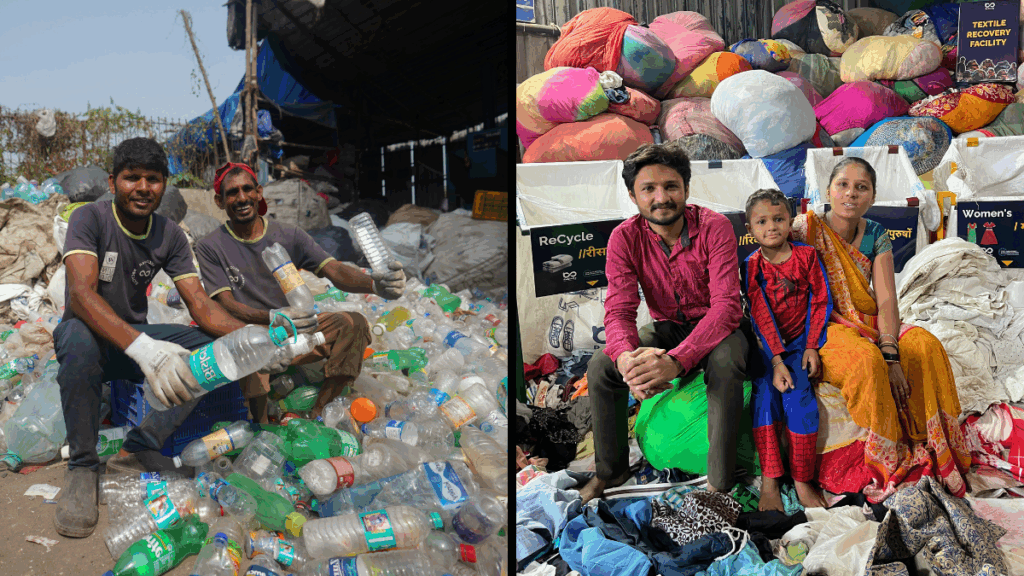
The People Behind the Process
In an MRF, the frontline is led by Safai Saathis — informal waste workers who have spent years collecting and sorting materials, often without recognition. Through ReCircle’s partnerships, many of them are now part of a formal network. They receive safety gear, regular training, and a steady income, turning what was once unsafe and invisible work into dignified employment.
At a TRF, the story of people and materials is just as layered. Here too, Safai Saathis play a crucial role in sorting textile waste into four key channels — Recycle, Relife, Revamp, and Rewear. Each category determines where the fabric goes next: whether it will be upcycled, recycled into new fibres, reworn, or converted to energy when recovery isn’t possible.
Working alongside them are the Waghri communities, who have been part of India’s informal textile recovery system for generations. Traditionally, they collect old clothes from households in exchange for utensils. Today, their deep-rooted networks and experience form an essential bridge between households and the TRF, ensuring that no piece of fabric is wasted.
Key Differences Between MRFs and TRFs
| Aspect | Material Recovery Facility (MRF) | Textile Recovery Facility (TRF) |
| Primary Focus | Mixed waste – plastics, paper, metals. | Textile and garment waste. |
| Inflows | Post-consumer and post-industrial dry waste. | Post-consumer clothes, offcuts, defective stock. |
| Core Operations | Sorting, cleaning, shredding, baling, and dispatch. | Sorting, cleaning, fibre recovery, and reuse. |
| Machinery Used | Conveyor belts, shredders, balers, washing lines. | Conveyor belts, cutting machines, and small-scale balers. |
| Communities Involved | Waste workers, rag pickers, raddiwalas. | Waghri community. |
| Output Materials | Bales of plastic, paper, metal etc. | Bales of segregated textiles, as per colour and GSM. |
| Goal | Divert mixed waste from landfills. | Build a closed-loop textile recycling system. |
| Scale and Reach | Already operational in various parts of the country. | Emerging infrastructure, growing rapidly in the fashion sector. |

Why India Needs Both: Building a True Circular Economy
As India’s consumption grows, so will its waste. Without recovery facilities, recyclers have nothing to recycle. MRFs and TRFs ensure that the materials we already have stay in the loop for as long as possible,
These facilities bridge the gap between collection and recycling by creating traceable, transparent pathways for every type of waste.
They help:
- Reduce landfill dependency by recovering materials that would otherwise be dumped.
- Enable compliance with plastic waste management and textile waste management rules.
- Create inclusive livelihoods by formalising waste work and ensuring fair wages.
- Support CSR waste management programs for responsible brands.
- Build collaboration between waste management companies in India, recyclers, and manufacturers.
In the end, the goal is simple: to build a system where nothing truly goes to waste.
Building the Base of a Circular India
Material Recovery Facilities and Textile Recovery Facilities are more than processing centres; they are the groundwork on which India’s recycling future stands. Strengthening these facilities means creating reliable inflows for recyclers, stable livelihoods for waste workers, and measurable progress toward sustainability goals.
As India’s circular economy grows, the MRF and TRF network will remain its backbone, ensuring that recovery, responsibility, and renewal stay at the heart of every material’s journey.
Partner with ReCircle to Build a Waste-Free Future
If you’re looking to make your organisation’s sustainability goals tangible, join hands with ReCircle. Together, we can keep materials in the loop, reduce waste at scale, and build a truly circular India.

